Article Search
Search CriteriaArticle Search:
Articles meeting the search criteria
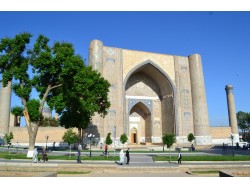
The whole world knows about the architectural miracle called the Taj Mahal. The emperor Shah Jahan built it to immortalise his favourite wife Mumtaz Mahal, whom he loved deeply. Several centuries before, Tamerlane the Great constructed the Bibi-Khanum mosque in commemoration of his favourite and beloved wife. This is a truly epic construction, so magnetic it is impossible to take one’s eyes off it. You should only see the dome of the mosque, which in ancient times was compared to the skies, and the arch of the portal, which was called by the lofty name of Milky Way.
The Bibi-Khanum mosque (..
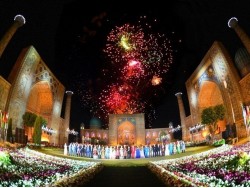
The Shark Taronlari International Festival is the most popular and prestigious song competition and festival in Central Asia. The festival is organised in the famous Registan Square in legendary Samarkand once in two years. In 1997 the event initiated by President of Uzbekistan Islam Karimov took place for the first time. Shark Taronalari will be held from 26th to 30th of August.
The festival is a competition between performers of ethnic music representing countries from all over the world.
In 2017 over 250 solo performers – singers and dancers – and music bands from 60 countries ar..
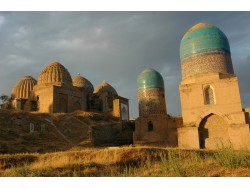
The Shakhi-Zinda necropolis is situated in the northern part of Samarkand, on the hills of ancient Afrosiab. The historical core of this ensemble is the mausoleum of Kusam ibn Abbas, Muhammad’s cousin, who, according to Arab chronicles, arrived in Samarkand in 676. There he disseminated Islamic ideas and was killed by heathens during a prayer. Among people, however, Kusam is known under the name of Shakhi-Zinda (live king), as, according to a legend, he is still alive in the other world.
In the following centuries his grave has been deeply revered by Muslims. In our time the flow of pilgrims ..

Gur-Emir (translates as ‘the grave of the emir’) is the place where Tamerlane is buried together with his sons and grandsons. Initially, the mausoleum was built for Muhammed Sultan, Tamerlane’s grandson, who died young in 1403, during a military campaign. Shocked by the death of his favourite grandson whom he regarded as his heir, Tamerlane ordered to build a mausoleum in the territory of the ensemble of Muhammed Sultan. Muhammad Sultan was the son of Tamerlane’s eldest son, Jehangir, and often substituted his grandfather on the throne in Tamerlane"s absence. more...
The mausoleum is a one-do..
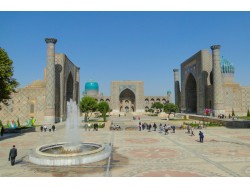
Bearing the name of ‘the pearl of Central Asia’, the Registan Square is regarded as one of the most beautiful squares in the world. The place gained fame through unique medieval oriental monuments surrounding it on three sides and forming a beautiful architectural ensemble: the Ulugbek madrasah (1417-1429), the Sher-Dor madrasah (1619-1636) and the Tilla-Kori madrasah (1646-1647). This ensemble occupies a place among the most significant constructions of the Islamic world. more...
All the three madrasahs (ancient oriental religious institutions) face the centre of the square forming a harmoni..

When in Samarkand, be sure to visit an original workshop specialising in the manual production of paper using a revived medieval technology.
Historical background. According to a number of reliable sources, Samarkand was the first place in Central Asia and the Middle East where paper was made manually with the help of a watermill. The production technology had been adopted from China. Later, the Arabs carried it westwards: by the 11th century it reached the Middle East, in the 12th century it came to Spain and then spread across Europe. The paper manufactured in China and Samarkand s..

Wine sampling at the Khovrenko Winery in Samarkand, the oldest wine factory in Central Asia, will be a nice addition to your city tour programme.
The tasting room is organised in a historical building of the late 19th century, the house of Russian merchant Filatov who founded the first winery in Uzbekistan as far back as 1868.
Filatov used local sweet varieties of grapes and introduced new ones he had brought from Crimea and some other parts of Europe. Four years later the various types of 'Samarkand grape wine from Filatov's gardens' won gold and silver medals in international c..

The observatory constructed by Ulugh Beg on one of the hills near Samarkand in 1428-1429 occupies a special place among the city’s historical monuments. According to Babur (Timurid ruler, founder of the Mogul Empire in India), who had personally seen the observatory, it was a three-storeyed round building, 30 m high and 46 m across, decorated with beautiful ornamental tiles. The main hall contained a huge instrument for observing the Sun, the Moon and other celestial objects. The observatory was a unique construction for its time.
A gigantic arc for measuring angles, 63 m long an..

Perhaps, the most interesting place in Urgut is Chor-Chinor (‘four plane trees’). In truth, there are forty gigantic plane trees (oriental planes) growing on the site, not four. The oldest of them is 1,100 years old, its trunk is 10 m in circumference and the hollow in it can shelter 10 adult persons. According to legend, four of the trees were planted by Arab military leader and sheikh Khoja Abu Talib Sarmast in the 9th century, as the Arabs had conquered Central Asia. He then became the ruler of Urgut and later was buried under the trees. This spot became a cultic place and afterwards a ma..

Religious – memorial complex of Imam Al-Bukhari is located in kishlak Khartang of Payaryk district of Samarkand area in Uzbekistan in 15 km from Samarkand city. The complex was built in 1998 on ancient kubba (burial place) of famous Islamic religious figure Imam Abu Abdullakh Mukhammad ibn Ismail Al-Bukhari on the occasion of 1225-years from the date of his birth. The best national masters of Samarkand, Tashkent, Bukhara, Khiva, Shakhrisabz, Andijan, Kokand and Namangan took part in its building, which had been finished by October in 1998. As a result, a new complex took in the best traditio..
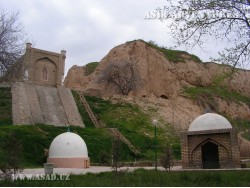
The Hoja Daniyar mausoleum is situated on the northern slope of Afrosiab, on the bank of the Siab canal, close to a curative spring. According to legends, Hoja Daniyar assisted Kusam ibn Abbas, the Prophet"s cousin, in disseminating Islamic ideas. There is also a belief that Hoja Daniyar is the Koranic and Biblical prophet Daniyar (Daniel), whose remains Tamerlane brought to Samarkand from the Middle East. Prophet Daniel is highly esteemed by the professors of three religions – Islam, Christianity and Judaism. He is considered one of the four prophets of Israel in Judaism.
Accordin..
Showing 1 to 22 of 22 (1 Pages)

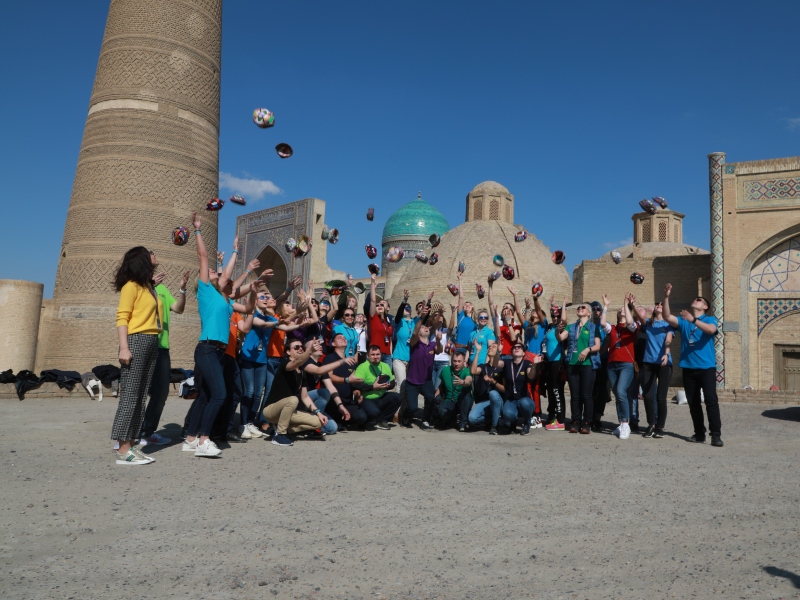 Centralasia Adventures
+998712544100
Centralasia Adventures
+998712544100
















